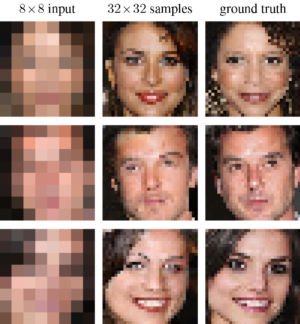Long before it become real, the "Zoom Enhancement" was entirely the domain of tough looking detectives from the hollywood movies.
But not anymore, Google Brain has devised some new software that can create detailed images from tiny, pixelated source images.
First, take a look at the following image.
The left column contains the pixelated 8×8 source images, and the centre column shows the images that Google Brain’s software was able to create from those source images. For comparison, the real images are shown in the right column. As you can see, the software seemingly extracts an amazing amount of detail from just 64 source pixels.
As we all know, it’s impossible to create more detail than there is in the source image, so how does Google Brain do it? With a clever combination of two neural networks and some extra data.
The first part, the conditioning network, tries to map the the 8×8 source image against other high resolution images. It downsizes other high-res images to 8×8 and tries to make a match.
The second part, the prior network, uses an PixelCNN (special type of convolutional neural network) to try and add realistic high-resolution details to the 8×8 source image.
It’s important to note that the computed superresolution image is not real. The added details are known as "hallucinations" in image processing jargon, and are a best guess but nothing more.
This raises some intriguing issues, especially in the realms of surveillance and forensics. This technique could take a blurry image of a suspect and add more detail—zoom! enhance!—but it wouldn’t actually be a real photo of the suspect. But it still might help the police find the suspect.
Source: arstechnica.com, condition number